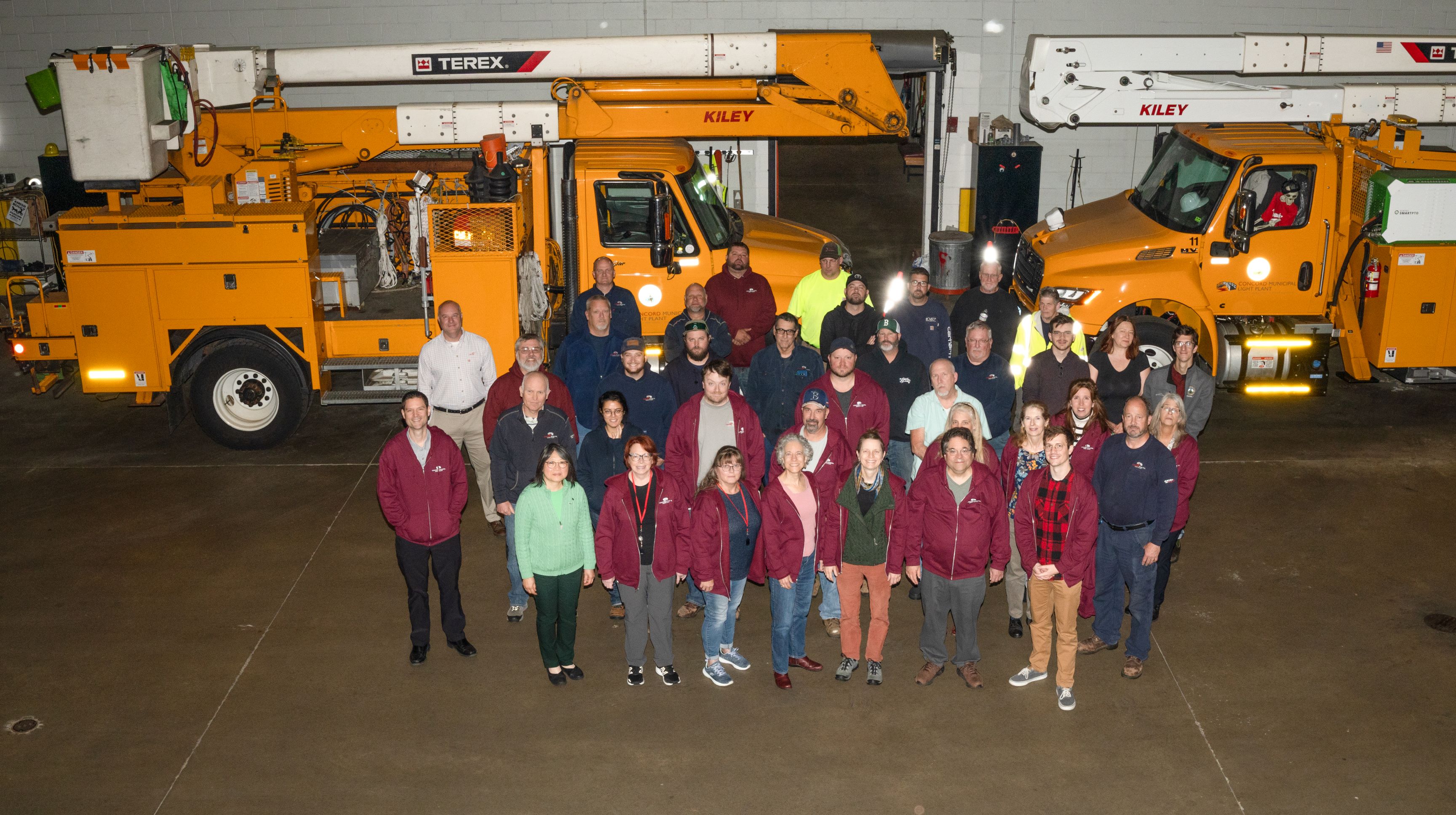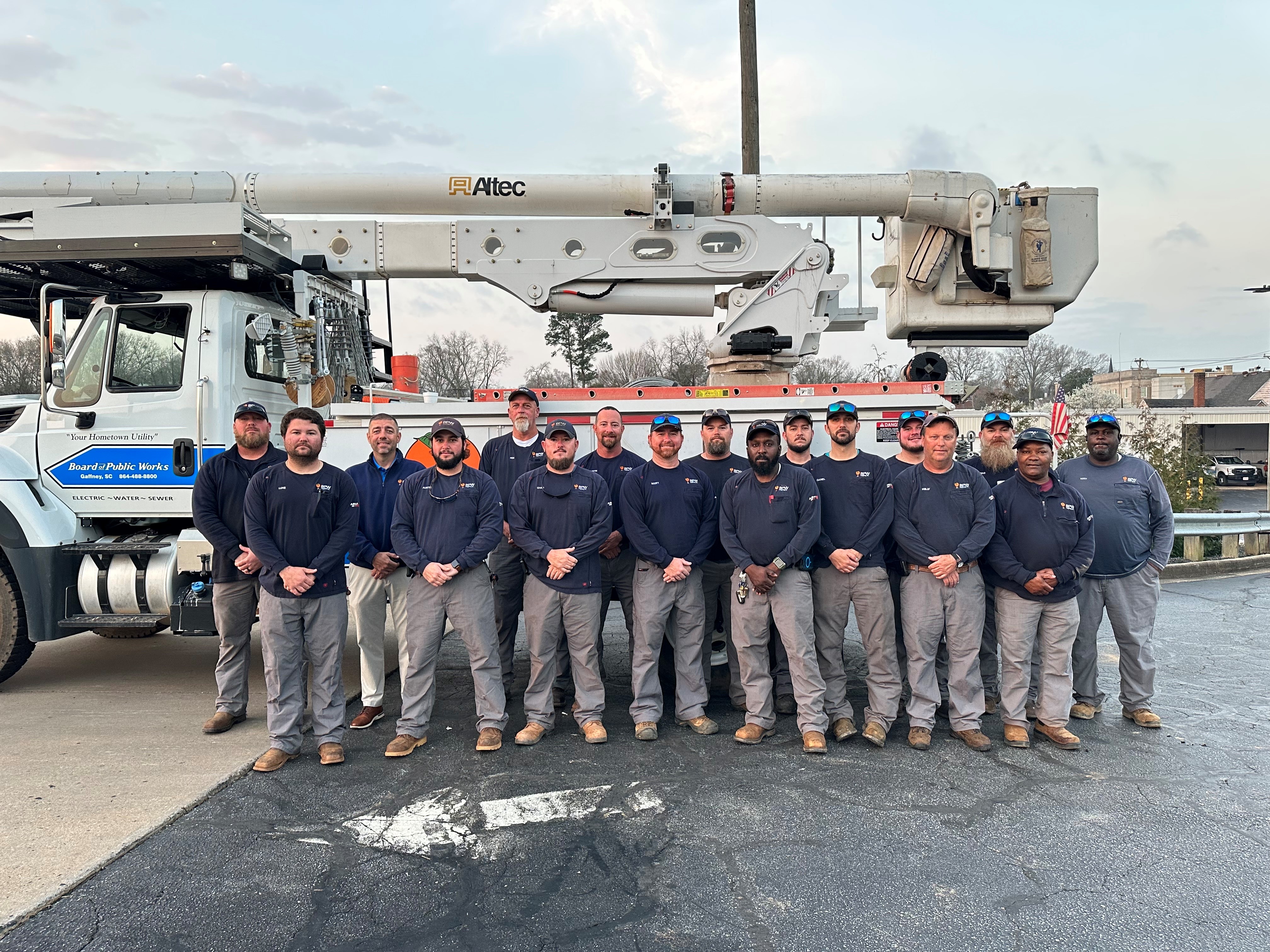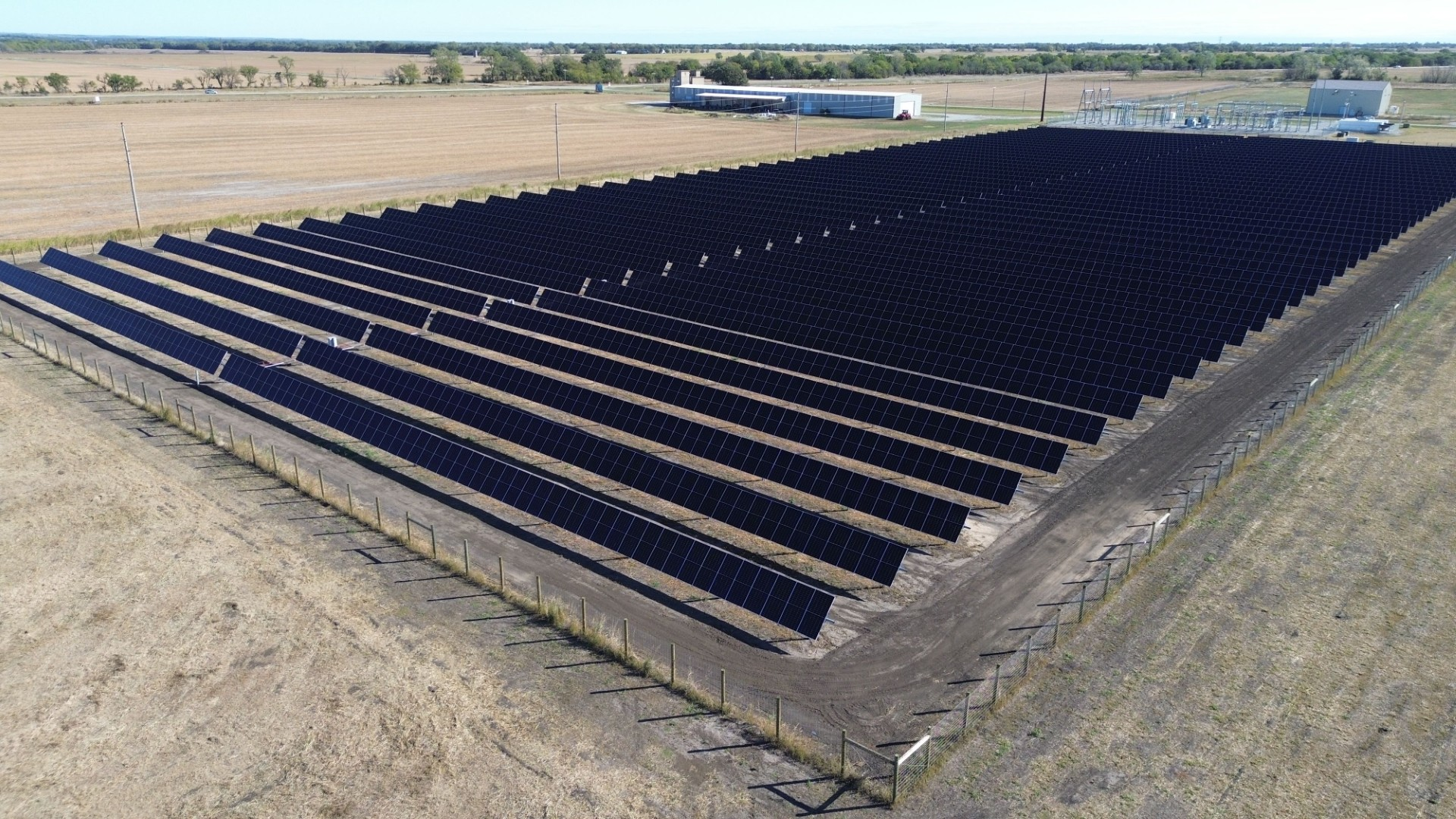Electric utilities are building systems that allow for an increasingly resilient grid, and cost needn’t leave any utility behind. Between the cost of various energy-related technologies coming down and a suite of federal funding opportunities, public power utilities serving smaller communities are exploring and deploying an array of technologies and system upgrades — without depleting community resources.
Making Space for More Solar
While far outside of the Sun Belt, Massachusetts ranks among the states producing the highest amounts of small-scale solar generation. In 2022, more than 3,400 gigawatt-hours of electricity were generated from small-scale solar, primarily residential rooftop panels. According to the Electricity Information Administration, small-scale systems accounted for more than three-fifths of the state’s total solar capacity in 2022. Despite these numbers, residents continue to look to solar to fill the void that will be left by the more than 1.4 gigawatts of natural gas capacity planned to be retired in the state this year.

“We have too much solar, and the community wants even more. If we’re going to keep adding solar power, we need a battery to store some of that excess electricity,” said Jason Bulger, director of Concord Municipal Light Plant. The community is taking advantage of the elective payment mechanism, also known as direct payment, enacted as part of the Inflation Reduction Act, to pay for several storage projects.

The elective payment mechanism is a way for nonprofit organizations, which do not file taxes, to directly benefit from the tax credits established in the 2022 law to stimulate economic and clean energy development. Prior to its enactment, nonprofit utilities including public power and cooperatives were effectively excluded from the production tax credit and investment tax credit for wind and solar.
For nonprofit organizations breaking ground on qualified projects in 2024, the effective credit is for 25.5% of the project cost (for-profit organizations get a 30% credit for projects started this year). Although tax credits diminish as time passes, Bulger added that CMLP will get maximum credit on a 2-megawatt, 4-megawatt-hour solar-plus-storage battery installation at a local school because that project is breaking ground in 2024.
CMLP will be using the elective payment mechanism for multiple initiatives. Because the provision has complex requirements, the public power utility hired a consultant to study its situation and lay out the criteria to be met. For instance, there are domestic content requirements, Bulger said, which include constructing projects with 100% U.S. steel and iron plus various percentages of U.S. manufacturing on other equipment parts.
Bulger said a larger storage project — a 5-MW, 15-MWh battery — probably won’t break ground until 2025. CMLP planned this second project to ensure that the community can continue absorbing solar production even if it exceeds demand. “We’ve seen other communities that have had to start saying no to new solar applications for rooftop solar because they are getting saturation issues,” Bulger said.
Without the battery, CMLP may reach a point where rooftop solar exceeds demand, and distribution system protective devices could kick in and start cutting power to customers on some transformers. The city may also be forced to deny additional solar permits.
Directly owning battery storage isn’t the only solution CMLP managers have considered. At an April town meeting, residents asked the city to explore other options, so it did.
“We’ve had a lot of meetings with companies that do cost-sharing models,” Bulger said. “You don’t have to put out upfront capital for a battery, and they split the proceeds of your transmission cost reductions, so you’re saving money as an entity. You’re also incurring very low risk because you don’t have to put in your own capital to buy the battery.”
Despite the attractiveness of these models, Bulger said his community is expecting to purchase its storage solution because CMLP has a primary need for the device: absorbing excess solar power. “These companies come in and say, ‘We’re putting in the battery, and we’re going to use it for peak shaving and transmission cost avoidance. We’ll dispatch it when we want,’” he explained. “We assume we’ll need to buy our own battery because we need a level of control that differs from how these cost-saving models work.”
Faster Finding and Fixing
Hurricane Helene’s windy, rainy edge wasn’t the first storm to knock out power for some customers in Gaffney, South Carolina, and it won’t be the last. That’s why the county’s Board of Public Works is welcoming a $417,605 grant funded by the U.S. Department of Energy to help the public power utility shore up reliability for its 8,000 electricity customers in the town of Gaffney and beyond.
Gaffney and 17 other communities in the state received funding from the Grid Resilience Grant Program. Santee Cooper administered the $10.8 million from the DOE, which primarily targets improvements in disadvantaged areas of the Palmetto State.
The project will pay for equipment to support fault location, isolation, and service restoration, or FLISR. Specifically, the board is installing automated switches on its already robust network. “We have our own fiber loop that incorporates our entire electrical system,” said Brad Wright, electrical superintendent for BPW. “Every site — four substations, 14 circuits — everything is connected via a direct BPW network and ties back into the central location here at the office in Gaffney.”
The BPW is taking a phased-in approach to FLISR. It starts with implementing the new communication-enabled switches to facilitate remote switching via the utility SCADA system. “If a large oak tree falls and takes out a circuit, and if you have multiple switches throughout the system, you can isolate that trouble area and get 90% of your customers back up quickly,” Wright explained.
Once these switches are installed, they will be controllable via the SCADA system and deliver the fault isolation part of FLISR. BPW also has an outage management system in place that gets outage notifications from its advanced metering system, so that supports fault location. Next, BPW intends to implement an advanced distribution management system, or ADMS. “You have to get the hardware installed before you get to software,” Wright added. The ADMS will automate switching, so the finished system will be able to detect, locate, and isolate faults independently.
In looking at that software, he will be seeking a system that can be managed by operational employees, not information systems experts. “When you start getting into the smaller municipal world, you have to be careful,” Wright said. “Do I have a 40-hour-a-week employee that will need to manage this? Or is this manageable with our current staff?”

He added that workers on the electrical side must be able to use the system without a lot of support from the IT team because those electrical workers are the ones who restore outages. “You look at a lot of software, and it’s not really self-managing. It requires someone to be sitting in front of that computer 24 hours a day. We’re looking for low-maintenance, self-sustaining systems,” Wright said.
Regardless of the department managing the technology, Wright added that it’s actually a customer-service enhancement. “BPW has been providing electric, water, and wastewater service to Gaffney and surrounding areas since 1907,” he said, adding that along with the lowest rates in the state, the public power utility also maintains better reliability than nearby utilities. “This is due to a comprehensive preventative maintenance program and year-round right-of-way maintenance. All these new technologies will help us continue providing a reliable distribution system and the best customer service we can.”
Generating Again
“We used to be a generating city back in the '60s and ’70s,” said Matt Stiles, city administrator for Hillsboro, Kansas, a town with an electric department that supplies power to the 3,000 people who live there. “We had diesel generators but decommissioned them before we joined KPP Energy. Now, we’re going to be a generating city once again.”
KPP Energy is a wholesale power agency serving two dozen member cities, including Hillsboro, and the agency recently secured a $35 million partially forgivable loan from the U.S. Department of Agriculture’s Powering Affordable Clean Energy, or PACE, program. Those dollars will help KPP build nine generating facilities to produce 18.5 MW of renewable energy across rural Kansas. Along with being able to get 25% of the loan forgiven, KPP will be able to take advantage of elective payment, like CMLP.

Among the solar projects ahead is a 1-MW solar farm in Hillsboro that will be placed on city property near a substation owned by Evergy, a nearby investor-owned utility that feeds power into the town.
The project is coming at an opportune time, as the Southwest Power Pool, the regional transmission operator for the area, recently changed its capacity requirements, and KPP was coming up short.
“KPP would have to add some capacity somewhere. We’d either have to buy it from somebody else or build some,” Stiles said. “These solar projects come at a crucial time for us because we’ll be able to add that capacity and take advantage of these loan and tax credit programs.”
Solar is a good fit, too, he added. “We don’t have any in the KPP portfolio now. We have wind energy, but we have so much sunlight where we’re placing these things, solar makes sense,” Stiles said.
The installation is rated to last 30 years, it will be low-maintenance, and the panels track the sun, so they’ll generate during the area’s summer peak hours. “That’s one of the advantages of solar,” Stiles noted. “We found that it follows our load trajectory, whereas our wind energy isn’t as reliable. We’ll still need to purchase some load-following generation, but it will help with peak shaving.”
Hillsboro will get leasing income from the solar facility, which will be situated on unused land with little commercial potential. That, along with the federal support KPP secured, means the new solar power will be cost-effective. Stiles said the project will help KPP and the city stabilize rates and avoid increases for the time being.

